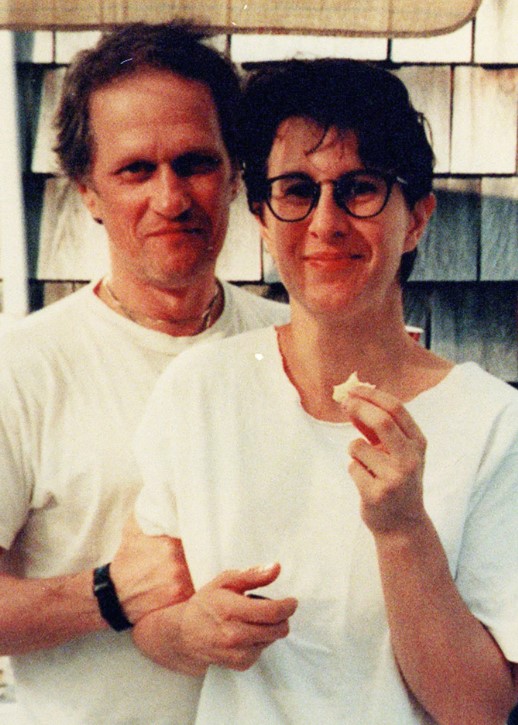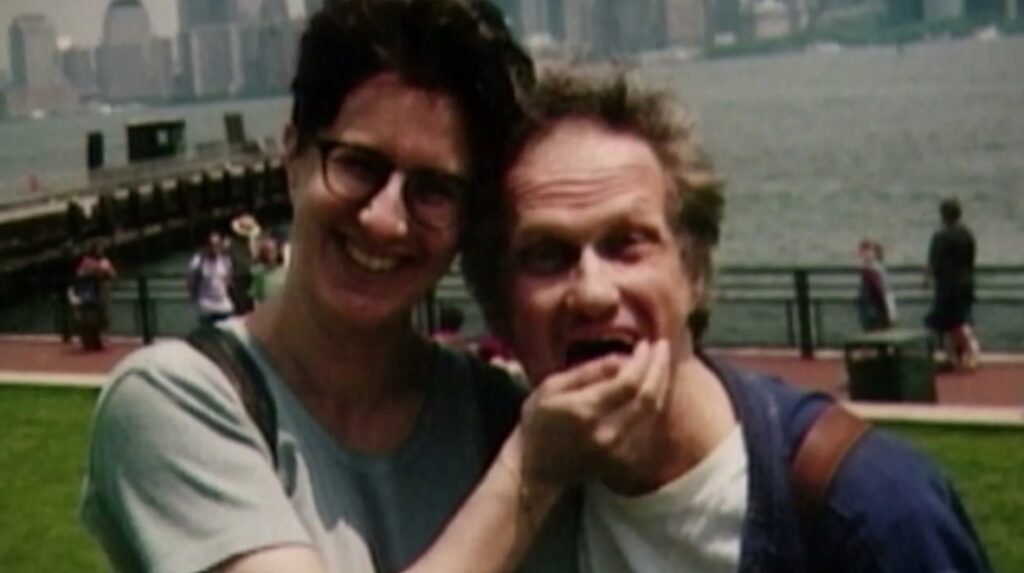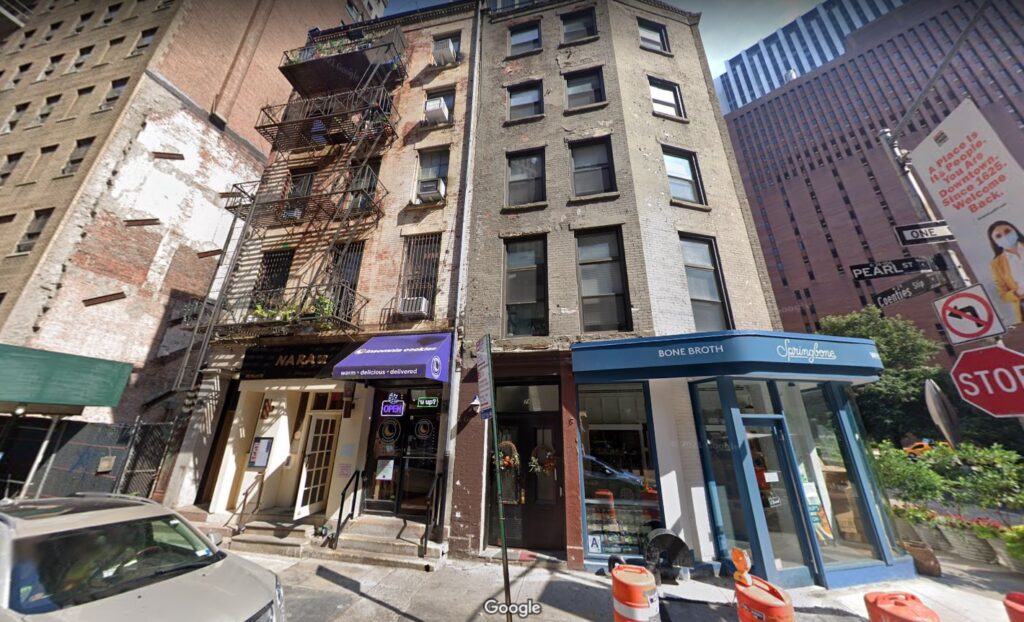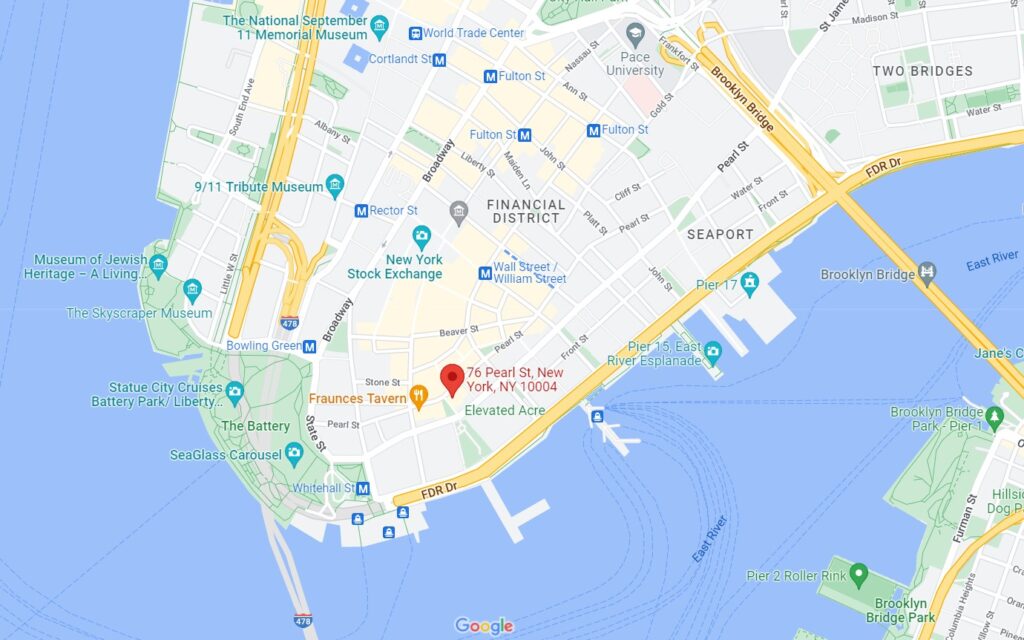When a Manhattan couple goes missing, investigators uncover a tangled web of secrets and lies that leaves them with more questions than answers. What happened to Camden and Michael?
Episode Media




Episode Sources
- Camden Anne Sylvia – The Charley Project
- Michael Sullivan – The Charley Project
- Manhattan Couple Missing
- No Clues in Duo Hunt
- Where is the landlord? Part 1 | Part 2 | Part 3
- Tenants, landlord disappear
- Cops hit wall in hunt for couple, landlord
- Missing her and waiting, mom holds out hope
- Disappearance in landlord’s past
- Landlord resurfaces, talks through lawyer Part 1 | Part 2
- Cops say floater not Sylvia
- Apparent bloodstain at Pearl St: New turn in couple case
- River Searched After Grisly Clue Found
- Pearl Street mystery landlord in tax arrest
- Landlord faces fraud charges
- Landlord sentenced for tax evasion
- New clues in missing tenants case
- The 10-Year-Old Case of Missing Downtown Couple
- Mom seeks new leads in 1997 vanishing of daughter and boyfriend
- Mom still wants truth about mystery of missing tenants, 20 years later
- Couple Vanishes From Their Loft After Feud With Landlord
- For Camden Sylvia and Michael Sullivan, Who Disappeared in 1997, Still Some Hope
Episode Transcript
Welcome back to Bite-Sized Crime. This week I’m bringing you the story of a couple who disappeared nearly 25 years ago, whose case is still shrouded in mystery. This episode includes graphic descriptions, so listener discretion is advised.
In November of 1997, 36-year-old Camden Anne Sylvia and her 54-year-old boyfriend Michael Sullivan were living the artist’s lifestyle in New York City. Originally from Cape Cod, Massachusetts, Camden had a fine arts degree from Hunter College. Her day job in a real estate office allowed her to spend her evenings creating beautiful pieces of art from found objects. Michael was an actor, dancer, and choreographer who worked at the New Museum of Contemporary Art in the Bowery. The couple had been together for years, and everyone who knew them said their relationship was solid. They were happy with each other and happy with their life in the city.
They lived in a top-floor loft at 76 Pearl Street in Lower Manhattan. Built in the 1920s, the brick building sat in the heart of the Financial District, where apartments came at a premium. But Camden and Michael were lucky – rent control had them paying only $300 a month for an apartment that was worth ten times that much. It was large, open, and airy – perfect for two artists in the city.
But the downside to their “perfect” apartment was never more apparent than in the winter. The building’s landlord was notoriously stingy with the heat, and the high ceilings in Camden and Michael’s loft made it difficult to stay warm in the New York winters.
On Friday, November 7th, Camden and Michael had planned for a quiet evening together. After work, they walked to the local video store and rented a movie for the night, the romantic comedy Addicted to Love. The night was brisk but clear, so they decided to go for a jog, something they often did together.
But this time, they didn’t return home.
When Camden didn’t show up for work on Monday, her coworkers started to get concerned. Camden had worked there for over a decade and was known to be pretty reliable; she wouldn’t just ditch work for no reason. Eventually, a friend reached out to Camden’s mom Laurie, who still lived in Cape Cod. She was shocked to hear that her daughter hadn’t been seen in nearly a week.
Laurie arrived in Manhattan on November 13th and immediately began searching for Camden and Michael. The landlord let her into the apartment, where she found everything just as it should be. Fresh food was in the fridge, and a bouquet of flowers was on the kitchen table next to the movie they had rented. Laurie found their wallets and passports in the loft, so it didn’t seem as though they had taken off for an impromptu vacation. The only things that seemed to be missing were one set of keys and their running shoes.
Laurie called the police and reported Camden and Michael missing. Officers from the 1st Precinct arrived at the apartment and began talking to neighbors, who told them that Camden and Michael often went jogging in The Battery, a historic park just a few blocks away.
Officers also spoke to the landlord, Robert Rodriguez. He gave them permission to search the building, but they found nothing of significance. It truly seemed as though Camden and Michael had gone for a run and just vanished. Officers asked Rodriguez if he would let them search his locksmith shop on the first floor, and he scheduled a time to let them in the next day.
But when detectives showed up for the search, Rodriguez wasn’t there. This was obviously an inconvenience, but there didn’t seem to be anything suspicious about it. It was a Sunday; he might have just decided not to make the nearly 2-hour drive into the city from his home in the upstate.
But the next day, detectives got an interesting call. A lawyer contacted the 1st Precinct and said that the family of Robert Rodriguez had reported him missing. According to the family, Rodriguez had left his house in New Hampton on Sunday afternoon, saying that he was going into the city. When he didn’t return, they contacted the police.
Now detectives had three missing people and zero explanations. They immediately began digging into Robert Rodriguez’s background and his history as landlord of 76 Pearl Street.
Robert Rodriguez purchased the building in 1993, opening his locksmith business on the ground floor and renting out the apartments above. According to residents, Rodriguez kept the building well-maintained and was generally seen as a nice guy. But like many New York City landlords, he was a bit tight-fisted when it came to using the building’s heat in the winter. The tenants had argued with him about this for years, and in the fall of 1997, it finally came to a head.
Rodriguez told his tenants that he would be increasing the rent at the end of the year, and if they didn’t agree, he would turn off the heat in the building. Naturally, the residents of 76 Pearl Street were not happy with this ultimatum. They banded together and signed a petition, saying that they would withhold their rent payments if Rodriguez followed through on his threat.
Even Camden’s mom Laurie knew about the building drama. “All I know is my daughter was in big negotiations and pretty angry about no heat. But that had been an ongoing thing for a couple of years. She just thought he was a jerk and was going to play games until she brought in legal help.”
Detectives learned that on the night they disappeared, Camden and Michael had delivered the signed petition to Rodriguez. Was it possible that he had flown into a rage and done something to harm the couple? It was certainly a theory, but detectives had no evidence to prove it, and with Rodriguez missing, no way to ask him about it.
So, the search continued. Police boats patrolled the East River and Battery Park, and helicopters flew over Rodriguez’s New Hampton property. They searched as much of the Pearl Street building as they could, but they couldn’t get access to Rodriguez’s house. On November 19th, the Manhattan District Attorney’s office denied their request for a search warrant, saying there was not enough evidence to support a search at that time.
By this point, Rodriguez’s family had stopped cooperating with police. Their attorney, Joseph Morro, told the New York Daily News, “We’re not going to give them carte blanche to go through there and grab everything they want. If they have sufficient evidence to get a search warrant, that’s fine by me.”
This was frustrating to investigators, who questioned why the family wouldn’t want to help find their missing loved one. A police spokesperson told reporters, “We are puzzled by their lack of cooperation. They were cooperative up until recently and then had an abrupt change of mind, raising the question of whether they’ve been in contact with Mr. Rodriguez.”
Then, on November 26th, reporters uncovered something completely unexpected. Camden and Michael weren’t the only missing people connected to Robert Rodriguez.
Six years earlier, Rodriguez had been the subject of a $13 million civil suit that went before the New York Supreme Court. Rodriguez and two co-defendants – Derrick Brickhouse and David King – were accused of conspiring to steal software, business records, and customers from Multiplex Electrical Services. In 1989, Rodriguez had wanted to expand his locksmith business and start servicing fire alarm systems. He named his new company Firesafe Alarm Systems and hired King and Brickhouse to work for him. But they were also employees of Multiplex, working for both companies at the same time. According to legal documents, the three men had conspired to steal company secrets from Multiplex in order to benefit their own company. By 1991, the case was moving towards litigation, but all of a sudden, David King disappeared. Rodriguez told the company’s lawyer that he hadn’t seen King since mid-January. The case was eventually settled, but David King was never found.
These new revelations gave detectives pause. How was it that Robert Rodriguez was connected to three missing people? But they didn’t have long to reflect; the day after this story broke, Robert Rodriguez reappeared. He had hired criminal defense attorney Michael Rosen, known for defending infamous clients like alleged mobster Thomas Gambino. Rosen told the DA’s office that his client wanted to be cooperative, but that they couldn’t speak to him without an arrest warrant. They also were not allowed to search either of Rodriguez’s properties – the home in New Hampton nor the building on Pearl Street.
While all of this was going on in New York, police across the border in New Jersey were dealing with a different discovery – a headless, handless body floating in a lake. The body was partially clothed in leggings, a t-shirt, and black sneakers, very similar to what Camden Sylvia had last been seen wearing. Initially there was hope that Camden had been found, but a few days later, police announced the autopsy results: the body did not belong to Camden Sylvia.
This news was bittersweet for Laurie – she was thankful that it wasn’t her daughter’s body, but devastated that there were still no answers.
On November 28th, three weeks after Camden and Michael disappeared, detectives got a break in the case. In the 2nd floor hallway of 76 Pearl Street, investigators discovered what appeared to be blood. There was a stain on the rug and something resembling blood spatter on the wall of the stairwell. There also appeared to be blood on the threshold of one of the apartments, one that was rented to a friend of Robert Rodriguez.
This new evidence gave investigators enough probable cause to obtain a search warrant for the common areas of the building. They removed pieces of the rug as well as the door to the locksmith shop and paint scrapings from the wall in the stairway.
But surprisingly, it wasn’t this evidence that led to an arrest; instead, it was something completely unrelated to Camden and Michael that detectives uncovered during the investigation.
While digging into his background, detectives discovered that Rodriguez had been engaged in a financial scheme to hide more than $1 million dollars in income. He had stolen the identity of a man named Allen Rodriguez – no relation – who had died in 1994. Robert Rodriguez used Allen’s identity to open a credit card in his name. He then used that credit card to purchase airline tickets and a washing machine for his wife while he was hiding from the police. On top of the identity theft, Rodriguez also failed to pay his business taxes for several years, and he engaged in money laundering through check-cashing services.
So on January 4, 1999 – fourteen months after the investigation began – Robert Rodriguez was arrested and charged with 29 counts of larceny, tax evasion, credit card fraud, and more. He pleaded guilty and was sentenced to four years in federal prison. His arrest allowed investigators to finally search his properties, where they hauled away boxes and boxes of potential evidence.
Although Rodriguez was behind bars, it was little comfort to Camden and Michael’s loved ones. New leads continued to pop up over the next few years, but nothing ever panned out. When a severed foot was found in the Hudson River, Laurie Sylvia gave blood in hopes that the medical examiner could test the DNA, but it wasn’t a match.
In February of 1999, the building at 76 Pearl Street was sold to a New York real estate corporation, and police descended on the property. They brought in cadaver dogs and tore up the floors, but it was another dead end.
In 2001, an anonymous tip sent police divers into the Hudson River to search for the couple’s bodies, but nothing was found. Finally, in 2002, the investigation was turned over to the NYPD’s cold case squad. It’s been there ever since.
In 2002, just before his release date, the New York State Parole Board added two more years to Rodriguez’s sentence for being “intentionally deceitful” during the investigation of a missing gun cache on his property. He was finally released in 2004 and settled in East Harlem.
Camden’s mom Laurie has tried to keep the case alive for the past 25 years. She has given several interviews with local and national news outlets, hoping that Camden and Michael will not be forgotten. But she is also a realist. She believes that the couple is dead, but she does hope that someone will eventually come forward with information. In 2012, she told the New York Times, “Other people must know something about Camden and Michael. I hope somehow they’ll find some sort of evidence. I think somebody could speak. How do you get rid of two people?”
For many years, Laurie would go down to the water on the anniversary of their disappearance and place flowers in their memory. She will not let her daughter be forgotten, but she finds closure to be elusive. “I don’t believe I’ll ever get that. There’s always going to be a piece of me missing. I know I’ll grieve forever.”
Camden Sylvia and Michael Sullivan went missing on November 7, 1997 from their home in Lower Manhattan, New York City. If you have any information about their case, please contact the NYPD’s 1st Precinct at (212) 334-0635. It’s never too late to give a family the answers they seek.
